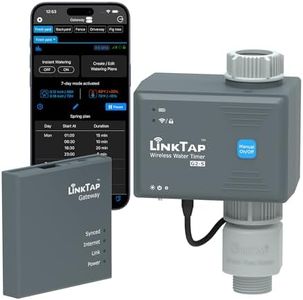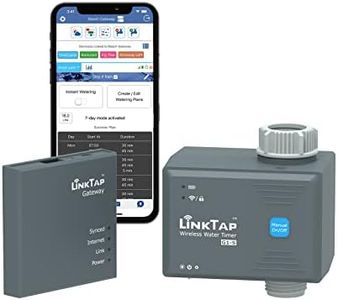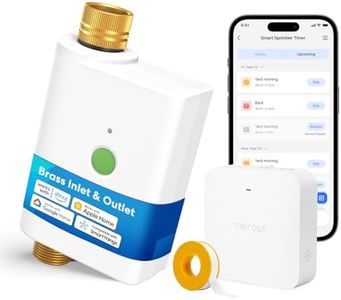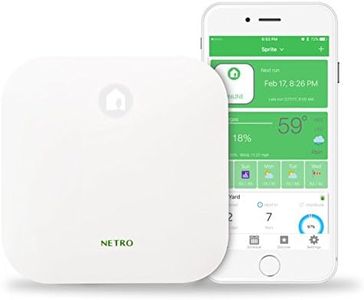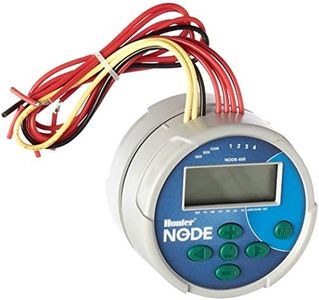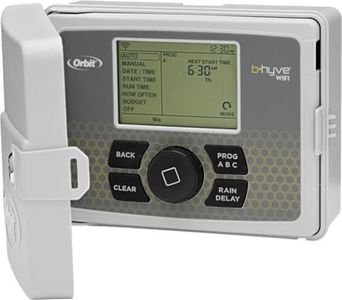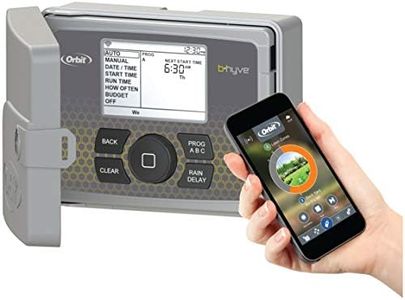We Use CookiesWe use cookies to enhance the security, performance,
functionality and for analytical and promotional activities. By continuing to browse this site you
are agreeing to our privacy policy
10 Best Smart Irrigation Controller
From leading brands and best sellers available on the web.Buying Guide for the Best Smart Irrigation Controller
Choosing a smart irrigation controller can save you water, time, and even money by automating and optimizing your garden or lawn watering schedule. The key is to find a product that matches the size and complexity of your landscape, integrates well with your preferred smart home platforms (if any), and gives you the right level of monitoring and control. Consider how hands-on you want to be with watering, what kind of plants you have, and how much you want to rely on automation versus manual adjustments. A good fit will ensure efficient watering while protecting your plants and keeping your experience convenient.Zone CapacityZone capacity refers to how many separate areas or 'zones' the irrigation controller can manage independently. This is important because different parts of your yard may have different watering needs—such as shady areas needing less water or flowerbeds needing more frequent attention. Simple controllers handle a few zones and are suitable for small yards with uniform needs, while advanced options can manage many zones for larger or more diverse landscapes. Assess how many distinct areas you need separate schedules for, and choose a controller that supports a bit more than your current requirement to allow for future expansion.
Weather Sensing and IntegrationWeather sensing is the controller's ability to adjust watering based on weather information like rainfall, temperature, or humidity. Some controllers have built-in sensors while others use internet-based local weather data. This feature ensures that watering is reduced or paused when it rains or is unusually humid, optimizing water use and avoiding overwatering. Controllers range from basic models with manual skip functions, to mid-level models with simple weather data integration, to advanced ones with real-time, hyperlocal weather analysis. If you want true set-and-forget convenience and water sustainability, prioritize more advanced weather integration.
Connectivity and Mobile App FeaturesConnectivity refers to how the controller communicates, usually through Wi-Fi, and whether it can be managed via smartphone apps or smart home platforms. This affects how you interact with your controller—basic models might require manual on-unit scheduling, while connected models let you adjust, monitor, and receive alerts from anywhere. Simple app features include turning the system on and off or adjusting schedules. More advanced apps offer granular control, watering history, and integration with smart assistants. Pick a system that matches your tech comfort level and desire for remote management—if you like hands-on monitoring or adjusting schedules while away, prioritize strong mobile connectivity.
Scheduling FlexibilityScheduling flexibility refers to how customizable individual watering schedules are for different zones. Some controllers offer simple, fixed schedules (for example, every day at 6 am), while others allow for highly detailed control including variable durations, interval days, and seasonal adjustments. Flexible scheduling is useful if you have varied plant types or want to optimize based on changing weather or plant growth cycles. If your landscape is uniform, a simpler schedule might suffice; if you want to fine-tune water use for different areas throughout the year, opt for controllers with more advanced scheduling features.
Installation and CompatibilityInstallation and compatibility concern how easy it is to set up the controller yourself, and whether it works with your current irrigation system and home network. Some controllers are designed for easy DIY installation, with clear instructions and compatibility with most standard valves, while others may require professional assistance or only fit specific systems. Check if the controller supports your current valve type (often called solenoids) and if it can connect to your home's Wi-Fi. If you prefer to avoid complex setup, look for features advertised as easy installation and broad compatibility.
